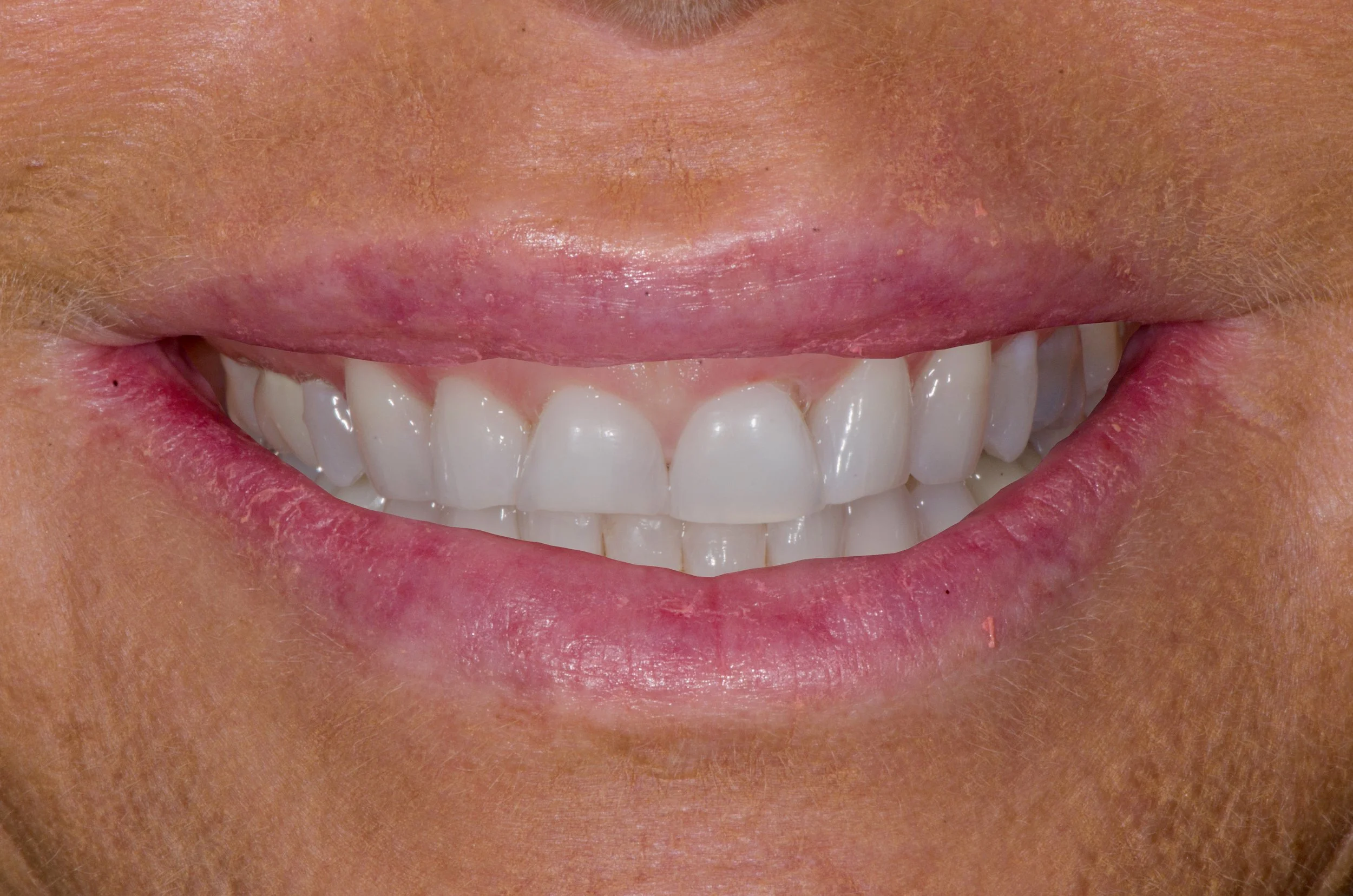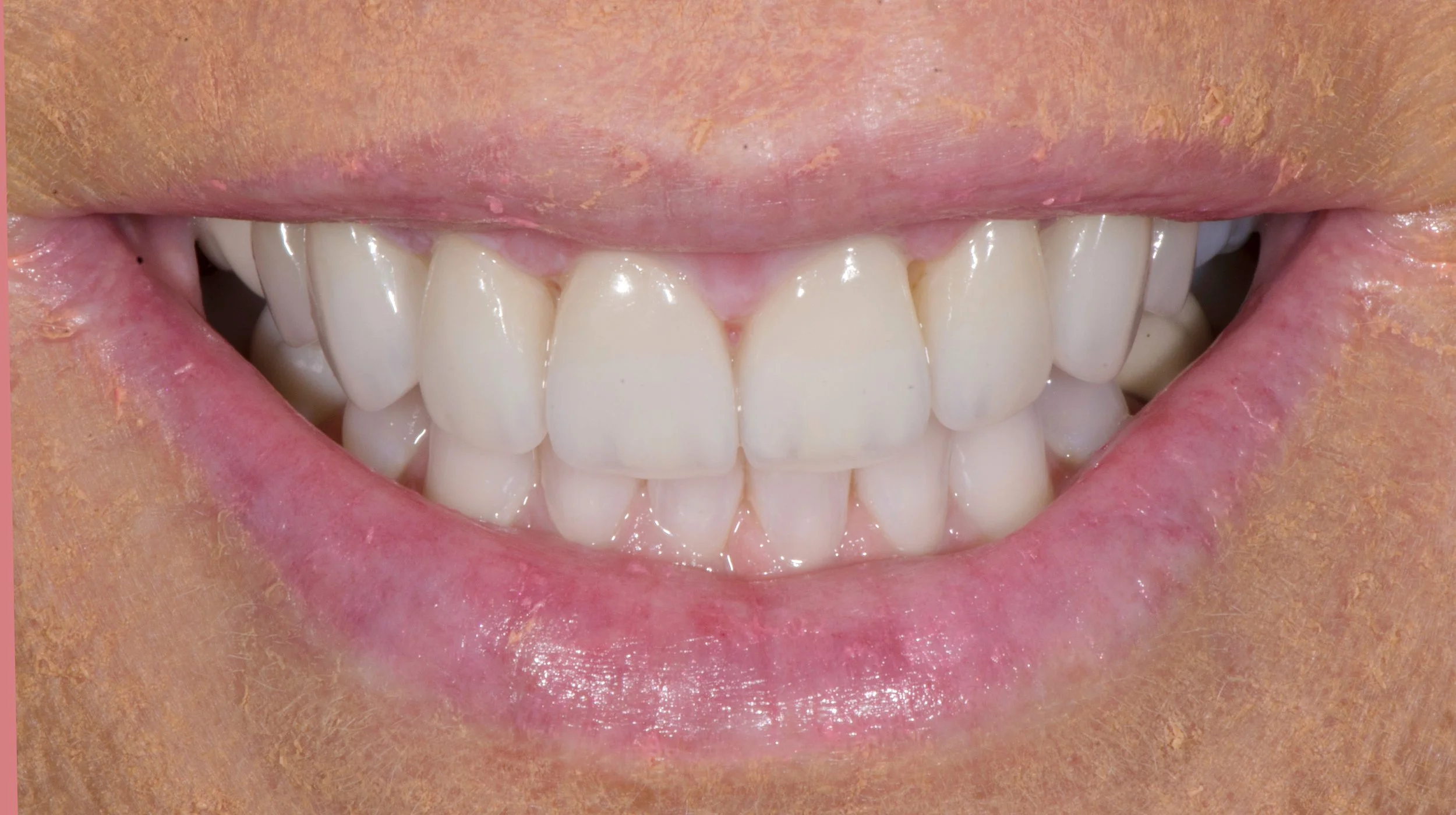What Do Teeth Look Like Under Veneers: The Truth Behind Your Picture-Perfect Smile
Ever wondered what's behind those picture-perfect smiles you see everywhere? While everyone's admiring the beautiful results of dental veneers, there's actually a fascinating transformation story happening underneath. Think of it as getting a behind-the-scenes look at how movie magic is made—except this magic happens right in your dentist's chair, creating smiles that can truly change lives.
The process of what happens to your teeth under veneers is more interesting than most people expect. It's a carefully planned journey that transforms your natural teeth into the perfect foundation for your dream smile.
The Veneer Journey: More Than Just a Simple Addition
Before we explore what happens beneath your new smile, let's clarify what veneers actually are. They're custom-crafted shells of porcelain or composite material that require your teeth to be prepared to accommodate their new covering.
Think of it like renovating a room. You don't just hang new wallpaper over the old—you prepare the surface to ensure the best possible result. Your teeth undergo a similar preparation process to ensure your new smile looks natural and lasts for years to come.
The veneer process is a commitment to maintaining your enhanced smile, as your teeth are specially prepared to work perfectly with their new covering.
The Preparation Process: Creating Your Perfect Foundation
Here's where the transformation begins—with precision and artistry working together. To understand what teeth look like under veneers, you need to know how your dentist prepares them for their beautiful new covering.
Your dentist carefully removes a thin layer of your tooth's enamel—typically about 0.5 to 0.7 millimeters. While that might not sound like much, this precise preparation is what allows your veneers to fit naturally and look amazing.
The process transforms your teeth from their natural shape into a refined foundation. Your dentist creates the ideal surface for the veneer by removing enamel from the front of your teeth, and sometimes from the edges, depending on your desired results.
During this phase, your teeth go from their original form to having a more streamlined appearance—purposefully shaped to create the perfect base for your stunning new smile.
The Foundation Beneath: What You'll Find Under Your New Smile
So, what do teeth look like under veneers once the preparation is complete? Instead of the smooth, natural curves of your original teeth, you'll find carefully sculpted foundations that have been expertly shaped to support your beautiful porcelain coverings.
The prepared teeth appear more compact than their original size. The front surfaces, which once had natural contours, now have a more uniform, architectural appearance designed for optimal veneer placement.
The color underneath may appear different too. Since some enamel has been removed, you're seeing more of the underlying dentin, which tends to be more yellow than the original white enamel surface. Some describe prepared teeth as having a more matte appearance.
The edges of prepared teeth have a precise, purposeful look—more uniform than their natural state. Your dentist has created a foundation that's optimized to support your veneers beautifully.
What's most notable is how these prepared teeth clearly serve as the perfect foundation for your new smile—smaller, more refined, and designed to work seamlessly with their porcelain covering.
Why Your Teeth Need This Comprehensive Makeover
You might be wondering why all this preparation is necessary. Can't veneers just go over your existing teeth like a glove? The short answer is no, and here's why the comprehensive reshaping is actually crucial for success.
First, there's the thickness factor. Even the thinnest veneers add material to your teeth. Without removing some of the original tooth structure, your new smile would look bulky and unnatural—think Austin Powers before his dental work, but in reverse.
The preparation also creates the right surface for bonding. Veneers need to adhere securely to your teeth, and smooth, natural enamel isn't the ideal surface for this kind of attachment. By slightly roughening and reshaping the tooth surface, your dentist creates a better foundation for the veneer to grab onto.
There's also the bite to consider. Your teeth need to fit together properly when you close your mouth, chew, and speak. If veneers were simply added on top of existing teeth without any preparation, your bite would be thrown off completely, leading to jaw problems, speech issues, and premature wear on your new investment.
The reshaping allows your dentist to control the final outcome more precisely. They can adjust angles, create better proportions, and ensure that your new smile not only looks good but functions properly too.
Different Veneers, Different Underground Scenes
Not all veneers require the same amount of tooth preparation, which means what's hiding underneath can vary significantly depending on the type you choose.
Traditional porcelain veneers typically require the most extensive preparation. These are the workhorses of the veneer world—durable, stain-resistant, and capable of significant transformations. But they come with a price: your teeth need to be shaped more significantly to accommodate their thickness and ensure a natural-looking result.
With traditional porcelain veneers, the prepared teeth often look quite different from their original form. The reshaping is more extensive, and the final result under the veneer looks notably altered.
Composite veneers, on the other hand, can sometimes be applied with minimal preparation or even no preparation at all, depending on your specific situation. When minimal prep is used, the teeth underneath look much closer to their original state—perhaps just slightly roughened or minimally contoured.
No-prep veneers (like Lumineers) are designed to go over your existing teeth with little to no removal of tooth structure. In these cases, what's underneath is essentially your original teeth, just with a very thin covering applied over them. The trade-off is that these ultra-thin veneers can sometimes look less natural and may not be suitable for more significant smile transformations.
The "What If" Scenario: Life After Veneers
Here's a common question people have: what happens if you need to remove your veneers? Whether it's due to damage, wear, or just changing your mind, veneer removal reveals those carefully prepared teeth in all their modified glory.
The reality is that once your teeth have been prepared for veneers, they'll always need some kind of covering. Those prepared teeth aren't designed to function on their own long-term. They're more susceptible to sensitivity, temperature changes, and general wear because their protective enamel layer has been reduced.
If veneers are removed, the teeth underneath might look somewhat different than you remember—perhaps more yellow, smaller than their original size, and more angular than their natural state. The surface texture might be different too—less smooth than natural enamel but not as polished as the veneer surface you've become accustomed to.
This is why the decision to get veneers is often described as a one-way street. You're committing not just to the initial investment, but to a lifetime of maintaining some kind of covering on those prepared teeth.
Protecting Your Beautiful Investment: Daily Care Tips
Understanding your veneer foundation helps you care for your smile with confidence. Here's what you need to know to keep your investment looking amazing for years to come.
You might notice some increased sensitivity to temperature in the early weeks, especially between preparation and final placement. This is completely normal, and temporary veneers help protect you during this transition period.
Your oral care routine becomes your smile's best friend. While the porcelain itself won't decay, the tooth underneath still needs protection. Pay special attention to where your veneers meet your natural teeth—these areas benefit from gentle, thorough cleaning.
Be mindful of habits that could damage your investment. Avoid using your teeth as tools, and choose softer alternatives to ice or hard candies. Your beautiful new smile deserves this extra care.
Regular dental visits become part of your confidence-maintaining routine. Your dental team will monitor both your veneers and the health underneath, ensuring your smile stays beautiful and healthy for decades.
When Veneers Aren't the Right Answer
Despite their popularity, veneers aren't always the best solution for achieving your dream smile. Sometimes, the amount of tooth preparation required doesn't make sense for the problem you're trying to solve.
If you're dealing with severely misaligned teeth, orthodontic treatment might be a better first step than jumping straight to veneers. Why permanently alter healthy teeth when movement could achieve the same result? Similarly, if you're primarily concerned with tooth color, professional whitening might give you the results you want without any irreversible changes.
For teeth that are heavily damaged or have large fillings, crowns might be more appropriate than veneers. And if you're someone who grinds their teeth at night, veneers might not last as long as you'd hope, making other treatments more cost-effective in the long run.
This is where having an experienced dental team becomes invaluable. Practices like Kirkwood Family Dental, with their 30 years of experience, have seen every scenario imaginable and can help guide you toward the treatment that makes the most sense for your specific situation—not just what's trendy or most profitable.
At Kirkwood Family Dental, we believe a stunning smile can be truly life-changing. See more before and after photos using veneers and other applications of cosmetic dentistry. Contact us today to learn how we can help you experience a transformation firsthand.
The Psychology of Transformation
There's something wonderful about the psychology of choosing veneers. You're making a decision to transform your smile and boost your confidence, which involves embracing that your natural teeth will be beautifully transformed into something even better.
Many people find this liberating—they're finally getting the smile they've always dreamed of, and the foundation work happens behind the scenes to support that amazing result. Others appreciate understanding the complete process, and most adapt beautifully once they experience the confidence their new smile brings.
This transformation is worth considering as part of your journey. You're not just changing your appearance; you're investing in a smile that can truly change how you feel about yourself.
The wonderful news is that people who choose veneers report extremely high satisfaction rates. Once you've experienced your new smile and settled into the care routine, the focus shifts to enjoying the beautiful results rather than worrying about what's underneath.
The Technical Marvel Behind the Scenes
From a purely technical standpoint, what happens under veneers is actually pretty impressive. Your dentist is essentially creating a custom foundation for each individual tooth, taking into account not just aesthetics but also function, bite alignment, and long-term durability.
The precision required is remarkable. Each tooth is prepared to specific measurements, with angles calculated to ensure the final result looks natural when you smile, speak, and eat. The prepared surface needs to be rough enough for proper bonding but smooth enough to avoid creating weak spots.
Modern dental technology has made this process more predictable than ever. Digital imaging allows dentists to show you what your final result will look like before any permanent changes are made. Temporary veneers let you test-drive your new smile before committing to the permanent versions.
The materials used for bonding have also improved dramatically. The adhesives that attach veneers to your prepared teeth are incredibly strong—often stronger than the original tooth structure. This means that when properly cared for, the bond between the veneer and your tooth can last for decades.
Maintenance Reality: More Than Just Brushing
Living with veneers means accepting a higher level of responsibility for your oral health. While the porcelain itself doesn't decay, everything else in your mouth still follows the normal rules of biology.
The margins where your veneers meet your natural teeth become critical areas that require extra attention. Plaque and bacteria can accumulate in these spaces, potentially leading to decay in the tooth structure underneath the veneer. This is why your hygienist might spend extra time cleaning around your veneers during routine visits.
You'll also need to be more selective about your toothpaste. Some whitening toothpastes that are fine for natural teeth can be too abrasive for porcelain veneers. Your dental team will typically recommend specific products that clean effectively without damaging your investment.
Flossing becomes even more important, but the technique might need to be adjusted. Some people find that they need to be more gentle around their veneers to avoid catching the floss on the edges.
The Economics of the Transformation
Understanding what happens to your teeth under veneers also helps explain why the procedure costs what it does. You're not just paying for the veneers themselves—you're paying for the precision preparation, the custom fabrication, and the expertise required to do both well.
The irreversible nature of the procedure also factors into the cost. Your dentist needs to get it right the first time because there's no going back to your original teeth. This level of precision and responsibility is reflected in the investment required.
When you consider that properly done veneers can last 10-20 years or more, the cost per year becomes more reasonable. You're essentially investing in decades of confidence and improved function, not just a temporary cosmetic fix.
Future Considerations: What Happens Next?
Eventually, all veneers will need to be replaced. Porcelain doesn't last forever, and neither do the bonding materials that hold everything together. When that time comes—typically 10-20 years down the road—you'll be looking at those prepared teeth again.
The good news is that replacing veneers is usually more straightforward than the initial placement. Your teeth are already prepared, so the process typically involves removing the old veneers, cleaning up the tooth surface, and placing new ones.
Some people choose to update their smile when replacement time comes around. Maybe the color that seemed perfect 15 years ago doesn't match your current preferences, or perhaps dental technology has advanced enough to offer even better options.
The key is maintaining regular relationships with your dental care provider so that when replacement time comes, you're working with someone who understands your history and can guide you through the best options available.
FAQs
Q: Do prepared teeth hurt without veneers? A: Prepared teeth can be more sensitive to temperature changes and pressure without their veneer covering. This is why temporary veneers are usually placed between preparation and final placement, and why damaged veneers should be replaced promptly.
Q: Can you get cavities under veneers? A: Yes, the tooth structure underneath veneers can still develop decay, especially around the edges where the veneer meets your natural tooth. This is why proper oral hygiene and regular dental checkups are crucial.
Q: What happens if a veneer falls off? A: A tooth that loses its veneer should be seen by your dentist promptly. The prepared tooth underneath is more sensitive and benefits from protection. Your dentist will typically place a temporary covering until a replacement can be made.
Q: Can you whiten teeth with veneers? A: Veneers themselves don't respond to whitening treatments. If you want a whiter smile, you'd need to replace the veneers with lighter-colored ones. This is why it's important to choose your veneer color carefully.
Q: How long do veneers typically last? A: With proper care, porcelain veneers typically last 10-20 years. Composite veneers generally have a shorter lifespan of 5-10 years. Factors like oral hygiene, diet, and habits like teeth grinding can affect longevity.
Q: Can you eat normally with veneers? A: Yes, but you'll need to avoid certain foods and habits that could damage them. Hard foods like ice, nuts, or candy can chip veneers. Staining foods won't affect porcelain veneers but can stain the bonding material around the edges.
Q: Is the tooth preparation painful? A: The preparation process is typically done under local anesthesia, so you shouldn't feel pain during the procedure. Some sensitivity afterward is normal and usually managed with temporary veneers and over-the-counter pain relievers.
Q: Can veneers be removed if I change my mind? A: While veneers can technically be removed, remember that your teeth have been permanently altered during preparation. You would need some form of restoration (new veneers, crowns, or extensive bonding) to protect and restore function to the prepared teeth.
Q: Do all veneers require the same amount of tooth preparation? A: No, the amount of preparation varies based on the type of veneer, the desired result, and your starting tooth structure. Traditional porcelain veneers require more preparation than no-prep veneers, but they also typically provide better results for significant transformations.
Q: How do I know if I'm a good candidate for veneers? A: Good candidates typically have healthy teeth and gums, sufficient enamel for preparation, realistic expectations, and good oral hygiene habits. Your dentist will evaluate your specific situation to determine if veneers are the best option for your goals.
Ready to Transform Your Smile?
At Kirkwood Family Dental, we love restoring smiles. Learn more about how we address cosmetic concerns using porcelain veneers by contacting our office today. We can’t wait to meet you!
Disclaimer
This blog post is intended for educational and informational purposes only and should not be construed as professional medical or dental advice. The information provided here is not intended to replace consultation with qualified dental professionals. Every individual's dental situation is unique, and treatment recommendations should always be made by licensed dental practitioners after proper examination and consultation.
The descriptions of dental procedures, outcomes, and experiences may vary significantly from person to person. Before making any decisions about dental veneers or other cosmetic dental procedures, please consult with a qualified dentist who can evaluate your specific needs, health status, and treatment goals.
While we strive to provide accurate and up-to-date information, dental techniques, materials, and best practices continue to evolve. Always verify information with current dental professionals and seek multiple opinions when considering significant dental procedures.
Individual results may vary, and no guarantee of specific outcomes should be inferred from the information presented in this article. The decision to pursue any dental treatment should be made in consultation with qualified professionals and based on your individual circumstances, health status, and treatment goals.





